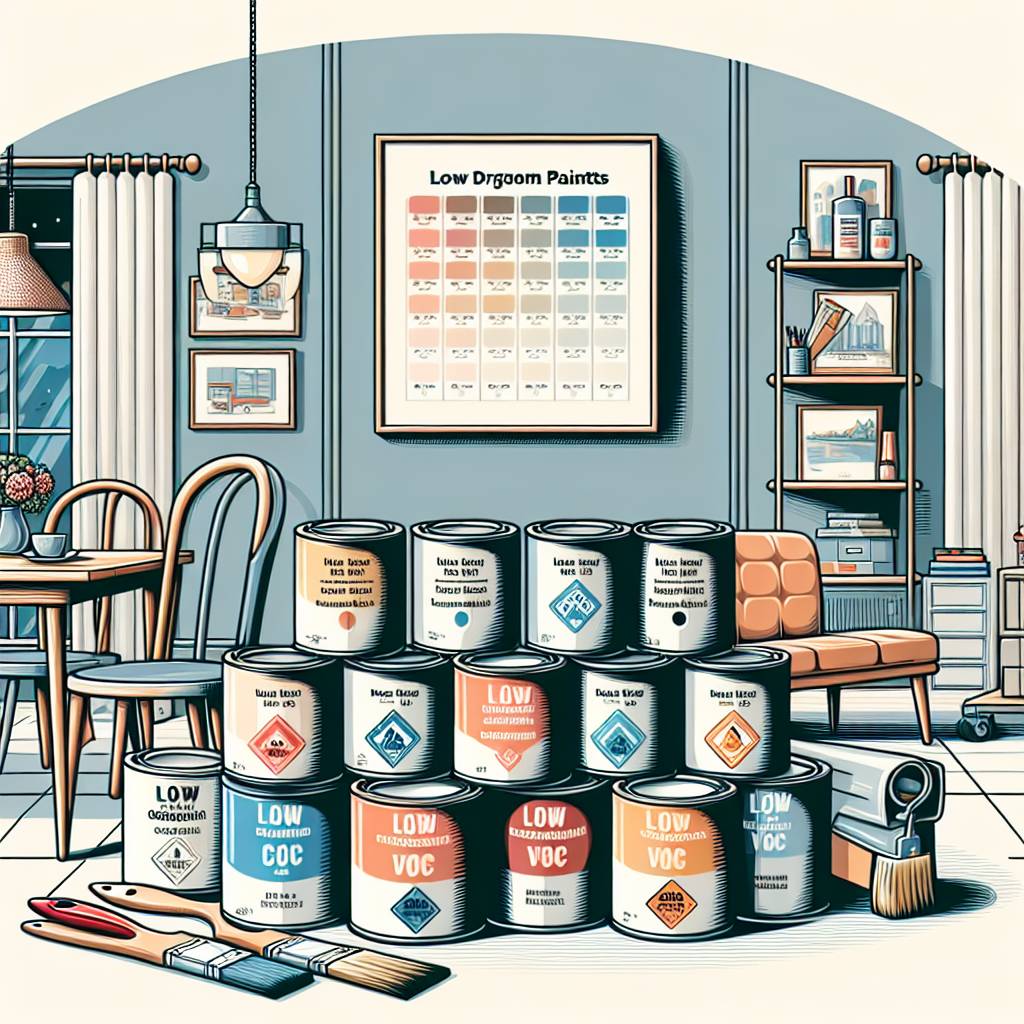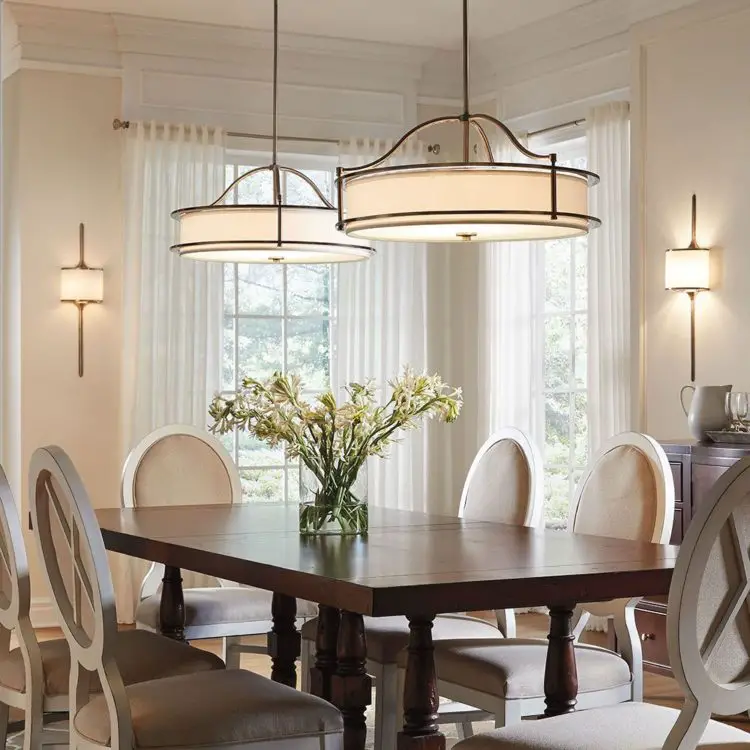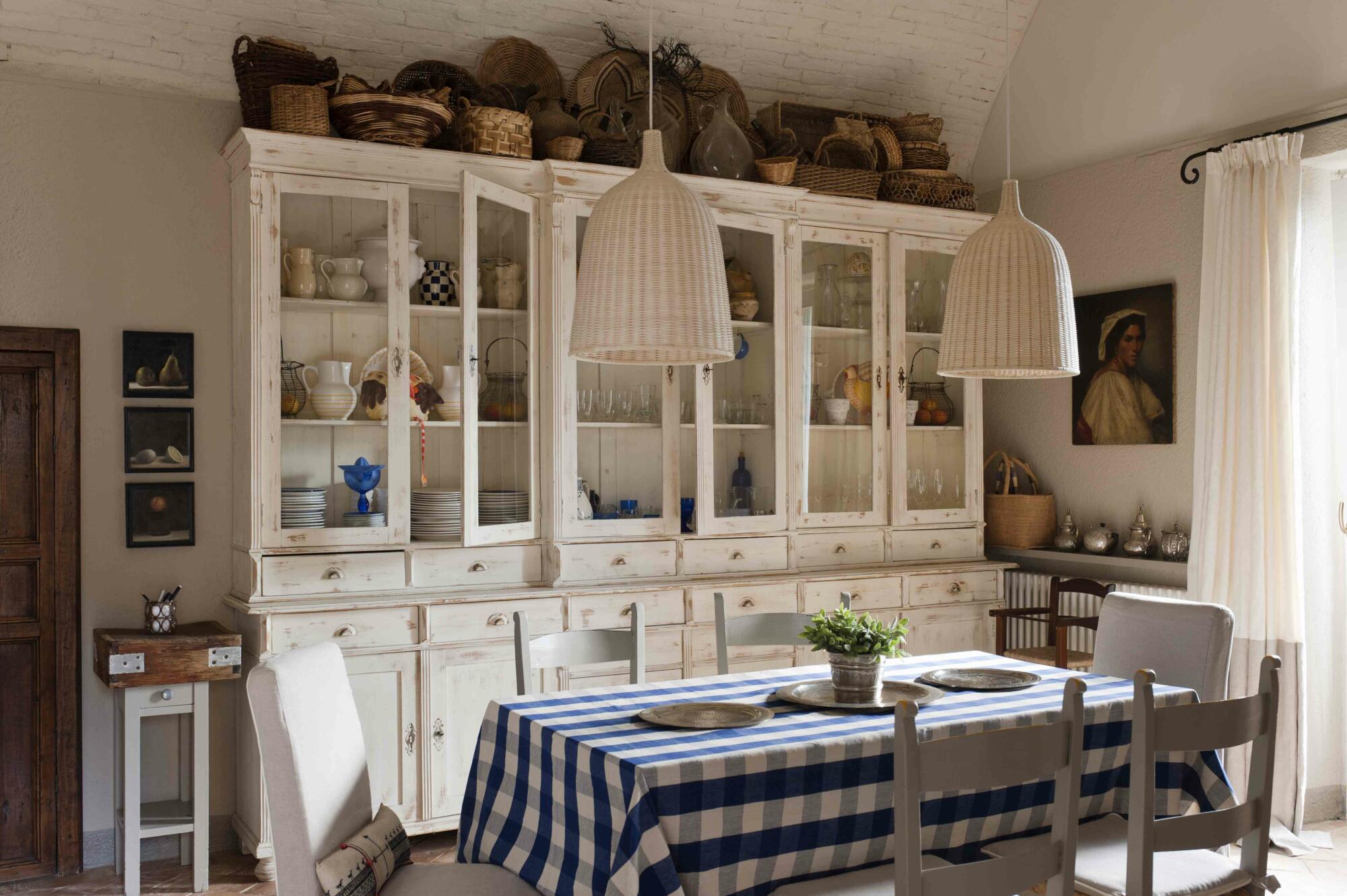Want to transform your dining room with a fresh coat of paint without worrying about harmful fumes? Low VOC paints are the perfect solution for creating a stunning and safe environment. In this guide, we’ll dive into everything you need to know about low VOC paints for your interior dining room walls.
From understanding the benefits of low VOC paints to choosing the right colors that suit your style, we’ve got you covered. We’ll also explore how low odor interior paint and water contribute to better indoor air quality and overall well-being. Plus, we’ll share some insider tips on application techniques and maintenance to ensure your dining room looks impeccable for years to come.
Key Takeaways
- Choose low-VOC or zero-VOC paints for your dining room to minimize harmful emissions and promote better indoor air quality.
- When selecting non-toxic paints, consider factors such as coverage, durability, and ease of application to ensure the best results for your dining area.
- Look for certifications like Green Seal or Greenguard to guarantee the eco-friendliness and safety of the paint products you choose.
- Prioritize brands that offer high-quality low-VOC and zero-VOC paints, such as Sherwin-Williams Harmony, Benjamin Moore Natura, and ECOS Paints.
- When shopping for eco-friendly paints, pay attention to the ingredients and opt for paints with natural components like clay, plant-based resins, and mineral pigments.
- Follow best practices for applying low-VOC paint, including proper ventilation, using low-VOC primers and sealers, and following manufacturer’s instructions for optimal results.
Overview of VOCs in Paint and Their Impact
What Are VOC Paints?
VOC paints, or volatile organic compound paints, are coatings that contain chemicals which can vaporize and enter the air. These compounds can have detrimental effects on indoor air quality.It’s essential to consider those with lower levels of these harmful compounds.
Exposure to high levels of VOCs from regular paint can lead to various health issues such as respiratory problems and headaches. This is particularly concerning in areas like dining rooms where people spend a significant amount of time, especially if the interior paint contains toxic chemicals.
Low VOC formula paints, on the other hand, contain significantly reduced levels of these harmful compounds. They offer a safer alternative by minimizing the release of toxic gases from oil, latex, interior paint, and acrylic paint into your home environment.
Benefits of Using Low VOC Paints
Switching to low VOC acrylic, oil, and latex paints offers several benefits for your dining room walls and overall well-being. These paints provide good coverage while reducing exposure to harmful chemicals, making them an ideal choice for interior spaces.
- Improved Indoor Air Quality: By opting for low voc paint options, you contribute to better indoor air quality, creating a healthier environment for your family.
- Reduced Health Risks: Lowering exposure to harmful emissions from traditional paint helps minimize health risks associated with breathing in high levels of VOCs.
- Environmental Impact: Choosing products with reduced volatile organic compounds supports environmental sustainability by decreasing air pollution both indoors and outdoors.
Making an informed decision when selecting acrylic paint for your dining room walls involves considering not only aesthetics but also the potential impact on health and well-being. With low voc paints, you achieve both visual appeal and peace of mind regarding indoor air quality.
Understanding Low-VOC vs Zero-VOC Paints
Benefits of Low-VOC Paints
Low VOC paints are a great choice for your dining room walls because they contain significantly lower levels of volatile organic compounds compared to traditional paints. This means that when you paint your dining room with low VOC acrylic paints, you’re reducing the amount of harmful chemicals released into the air. As a result, low VOC paints contribute to better indoor air quality and can help create a healthier environment for you and your family.
Using low VOC acrylic paints in your dining room also minimizes the impact on the environment. Traditional paints release high levels of VOCs, which contribute to air pollution and have detrimental effects on ecosystems. By choosing low VOC options, you’re making an environmentally friendly decision that reduces harm to both indoor and outdoor environments.
Drawbacks of Low-VOC Paints
While low VOC acrylic paints offer significant benefits, it’s important to note that they still contain some level of volatile organic compounds. Although this amount is considerably lower than traditional paint products, individuals who are extremely sensitive or have allergies may still experience mild discomfort from exposure to these compounds.
Another drawback is that some low-VOC paints may not be as durable or long-lasting as their higher-VOC counterparts. It’s essential to carefully consider the specific brand and type of paint before making a purchase decision.
Advantages of Zero-VOC Paints
Zero-VOC paints are considered the safest option for indoor air quality due to their minimal or no VOC content. Choosing zero-VOC paint for your dining room walls ensures that there is virtually no off-gassing after application, leading to cleaner and purer indoor air.
For individuals with respiratory issues or allergies, zero-VOC paint provides peace of mind by eliminating exposure to harmful chemicals commonly found in traditional paint products. Using zero-VOC paint contributes positively towards sustainable living practices while minimizing environmental impact.
Considerations When Choosing Between Low- and Zero-VOc Paints
When deciding between low-VOc and zero-VOc options for painting your dining room walls, it’s essential first consider any health concerns or sensitivities within your household. If anyone has respiratory issues or chemical sensitivities, opting for zero-VOC toxic paint would be highly beneficial.
Benefits of Choosing Non-Toxic Paint for Dining Rooms
Healthier Indoor Environment
Choosing low VOC paints for dining room walls can significantly improve the indoor air quality. These paints contain fewer volatile organic compounds, reducing harmful chemical exposure. As a result, toxic paint contributes to creating a healthier environment by minimizing the release of pollutants into the air.
Non-toxic paints are especially beneficial in spaces where people gather, such as dining rooms and kitchens. By using low VOC paints in these areas, you can ensure that there are no fumes or odors that could affect the taste and aroma of food. This is essential for maintaining a pleasant dining experience while also safeguarding overall well-being from toxic paint.
Eco-Friendly Option
In addition to promoting better indoor air quality, low VOC paints offer an eco-friendly alternative to traditional paint products. By choosing non-toxic options, you actively minimize the negative impact on the environment caused by conventional high-VOC paints. This aligns with sustainable living practices and contributes to reducing pollution levels both inside homes and in outdoor environments by avoiding toxic paint.
Furthermore, opting for non-toxic paint supports long-term health effects by decreasing exposure to chemicals known to have adverse consequences on human health. Over time, continuous exposure to high-VOC compounds from regular paint can lead to respiratory issues and other health concerns. Therefore, selecting low VOC paint options helps mitigate these risks while still achieving desirable aesthetic results.
Factors to Consider When Selecting Low-VOC Paints
Clear Labeling
When choosing low VOC paints for your dining room walls, it’s crucial to look for paint brands that clearly label their products as low-VOC or zero-VOC. This labeling ensures that the paint contains minimal volatile organic compounds, contributing to better indoor air quality. By selecting a brand with transparent labeling, including paint, you can be confident in your choice and prioritize the health of your family.
It’s important to note that not all paints marketed as “green” or “environmentally friendly” are necessarily low in VOC content. Therefore, being vigilant about checking the labels for paint is essential when making this selection. For example, brands like Sherwin-Williams and Benjamin Moore offer a range of low-VOC options clearly labeled on their products.
Coverage and Durability
Consider the coverage and durability of the low VOC paint you choose for your dining room walls. While prioritizing air quality is important, it’s equally vital to ensure that the paint meets your specific needs in terms of coverage and longevity. Look for paints that provide excellent coverage with one coat to minimize both time and resources spent on painting.
Opt for a durable low-VOC paint formulation that can withstand regular cleaning without compromising its appearance or emitting harmful fumes over time. Brands such as Behr Premium Plus Ultra Interior Paint offer exceptional coverage while maintaining a low odor profile—ideal for creating a healthier environment within your home without sacrificing performance.
Additional Features
When selecting low VOC paints for dining room walls, take into account any additional features offered by different brands. Some manufacturers incorporate extra benefits such as mold resistance or easy washability into their low-VOC paint formulations, enhancing their suitability for specific spaces like dining rooms where cleanliness is paramount.
For instance, consider opting for paints with added mildew resistance if your dining room is prone to high humidity levels or lacks adequate ventilation. Similarly, prioritizing easy washability can simplify maintenance while ensuring that frequent cleaning doesn’t compromise indoor air quality due to harsh chemical cleaners interacting with the painted surfaces.
Exploring the Ingredients of Non-Toxic Paints
Natural Ingredients
Non-toxic paints are formulated using natural ingredients like plant oils, resins, and minerals instead of synthetic chemicals. These natural components make the paint less harmful to both human health and the environment. For instance, clay, chalk, and water-based pigments are commonly used in non-toxic paints as safer alternatives to toxic substances found in traditional paints.
Understanding these natural ingredients, such as paint, can help you select a product that aligns with your preferences. By opting for non-toxic paints made from organic compounds rather than chemical-laden ones, you contribute to creating a healthier indoor environment while also reducing environmental impact.
For individuals with chemical sensitivities, these natural materials offer an excellent solution by minimizing exposure to potentially harmful substances typically present in conventional acrylic or latex paints.
Making Informed Choices
By familiarizing yourself with the ingredients used in non-toxic paints, you can make informed choices about which products best suit your needs. This knowledge empowers you when interacting with paint manufacturers or suppliers because it allows you to ask specific questions about the composition of their products.
Understanding whether a paint contains acrylic polymer, a common component in many traditional latex paints known for emitting volatile organic compounds (VOCs), enables you to avoid such formulations if VOC levels concern you. Instead, look for paint options that explicitly advertise themselves as “low-VOC” or “zero-VOC,” indicating minimal off-gassing of harmful chemicals into your living space.
Furthermore, being aware of the presence of preservatives in certain acrylic paint formulations helps ensure that the chosen product meets your criteria for eco-friendliness and reduced toxicity.
Certifications to Look for in Non-Toxic Paints
Importance of Certifications
When choosing low VOC paints for your dining room walls, it’s crucial to look for specific certifications that guarantee the paint meets stringent environmental and health standards. These certifications, such as Green Seal, Greenguard Gold, or LEED certification, ensure that the paint has undergone rigorous testing and adheres to specific criteria for low VOC content and overall sustainability.
Opting for certified non-toxic paints provides peace of mind knowing that you are using a safe and eco-friendly product. These certifications not only validate the safety of the paint but also its minimal impact on indoor air quality. This is especially important in spaces like dining rooms where people spend a significant amount of time painting.
Understanding Emissions Standards
The presence of these emissions standards, indicated by certifications such as Greenguard Gold certified, signifies that the paint emits minimal levels of volatile organic compounds (VOCs) into the air. Lower VOC emissions from paint contribute to healthier indoor air quality by reducing potential health risks associated with prolonged exposure to harmful chemicals.
Best Practices for Applying Low-VOC Paint in Dining Areas
Ventilation Is Key
When painting dining room walls with low VOC paints, it’s crucial to ensure proper ventilation. This can be achieved by opening windows and using fans during both the painting and drying processes. By using paint, you minimize exposure to potentially harmful fumes while allowing fresh air to circulate in the room.
Proper ventilation also speeds up the drying process, helping to disperse any lingering paint odors more quickly. This is especially important in a dining area where family members or guests may be sensitive to strong paint smells.
For example:
- Open windows on opposite sides of the room.
- Use box fans placed strategically for optimal airflow.
Utilize Low-VOC Primers
Before applying low-VOC paint to your dining room walls, consider using low-VOC primers. These primers not only enhance adhesion but also reduce the number of coats needed for complete coverage of paint. By following this practice, you can achieve a smooth and uniform finish without compromising indoor air quality.
Low-VOC primers are designed specifically for use with low-VOC paints, ensuring compatibility between products and maximizing their effectiveness in reducing volatile organic compounds emitted into your home environment.
For instance:
- Look for “low VOC” or “zero VOC” labels when selecting a primer.
- Apply an even coat of primer over clean and dry walls before painting.
Adhere to Manufacturer’s Instructions
To achieve optimal results when using low-VOC paints in your dining area, it’s essential to follow the manufacturer’s instructions closely. This includes adhering to recommended paint drying times between coats as well as staying within specified temperature ranges during paint application and curing.
By following these guidelines, you can ensure that the paint cures properly without compromising its durability or appearance. Sticking to manufacturer recommendations helps maintain indoor air quality by minimizing off-gassing from freshly painted surfaces.
Remember:
- Consult the product label or technical data sheet for specific instructions.
- Avoid painting in extreme temperatures (e.g., very high humidity or cold conditions).
Top Picks for Low and Zero-VOC Paint Brands
Benjamin Moore Natura
If you’re looking for a wide variety of colors and excellent coverage with zero VOCs, Benjamin Moore Natura is a top pick. This paint brand offers an extensive range of hues, ensuring that you find the perfect shade for your dining room walls. With its zero VOC formulation, it provides a safe and environmentally friendly option for painting indoor spaces. The absence of volatile organic compounds in paint means minimal odor during application, making it ideal for areas where strong smells are undesirable.
Another advantage of Benjamin Moore Natura paint is its exceptional coverage capability. This feature allows you to achieve the desired color intensity with fewer coats, saving time and effort during the painting process. This low-VOC paint brand promotes better indoor air quality by reducing harmful emissions commonly found in traditional paints.
- Wide variety of colors
- Excellent coverage with zero VOCs
Sherwin-Williams Harmony
Sherwin-Williams Harmony stands out as one of the best low-VOC paint brands known for its durability and diverse finishes suitable for dining room walls. Its low VOC levels make paint an excellent choice if you’re aiming to create a healthier environment within your home while beautifying your living space. The durability aspect ensures that your dining room walls maintain their pristine appearance despite daily wear and tear.
Moreover, Sherwin-Williams Harmony paint offers various finishes to cater to different aesthetic preferences or functional needs in dining areas. Whether you prefer matte, satin, or semi-gloss finishes, this paint brand has options that can complement your interior design style while still adhering to low-VOC standards.
- Low VOC levels
- Durability and variety of finishes suitable for dining room walls
ECOS Paints
For those seeking comprehensive selections of zero-VOC paints that are both water-based and free from harmful chemicals, ECOS Paints is an ideal choice when considering options for painting dining room walls. This eco-friendly paint brand prioritizes safety without compromising on performance or aesthetics.
ECOS Paints’ commitment to providing zero-VOC solutions contributes significantly to creating healthier indoor environments by minimizing exposure to toxic substances commonly found in conventional paints. Furthermore, being water-based makes these paint products easier to clean up after application compared to oil-based alternatives.
Tips for Shopping Eco-Friendly Paints for Your Home
Identifying Low VOC and Zero-VOC Paints
When shopping for low VOC paints for your dining room walls, it’s crucial to carefully read the product labels. Look for paints specifically labeled as low-VOC or zero-VOC. These labels indicate that the paint contains lower levels of volatile organic compounds, which can be harmful to both human health and the environment. By choosing these options, including paint, you can ensure a healthier indoor air quality while also reducing your carbon footprint.
Researching different brands is essential when seeking eco-friendly paint products. Consider their commitment to sustainability, transparency, eco-friendly practices, and paint. Some companies prioritize using natural ingredients and sustainable manufacturing processes in their paint production. For instance, certain brands may offer air purifying paint, which actively works to improve indoor air quality by absorbing harmful pollutants.
Trying Out Sample Sizes Before Committing
Before committing to a larger quantity of paint products, consider purchasing sample sizes or tester pots from various brands. This allows you to test out different colors on your dining room walls without investing in large quantities right away. By doing so, you can assess how the paint colors appear under different lighting conditions and how they complement your existing decor.
Exploring various shades offered by environmentally friendly paint lines such as chalk paints or those with a matte finish can help you find the perfect tint for your dining room walls while ensuring that they are free from harmful chemicals like formaldehyde and benzene often found in traditional paints.
Summary
You’ve learned about the harmful effects of VOCs in traditional paints and the benefits of choosing low-VOC or zero-VOC options for your dining room. Understanding the difference between these types of paints, exploring their ingredients, and considering certifications are crucial steps in making an informed decision. From tips on selecting the right paint to best practices for application, you’re now equipped to transform your dining area into a healthier space without sacrificing style.
Now it’s time to take action! Head to your nearest home improvement store or browse online for low-VOC and zero-VOC paint brands. Make the conscious choice to create a dining room that not only looks beautiful but also promotes a healthier environment for you and your loved ones. Your decision today can have a lasting impact on your well-being and the planet, including paint. Happy painting!
Frequently Asked Questions
What are VOCs in paint and how do they impact indoor air quality?
VOCs, or volatile organic compounds, are chemicals that can vaporize into the air. Paint can contribute to indoor air pollution and have been linked to various health issues. Choosing low-VOC or zero-VOC paints can help improve indoor air quality.
How do I differentiate between low-VOC and zero-VOC paints?
Low-VOC paints contain reduced levels of volatile organic compounds compared to traditional paints, while zero-VOC paints have minimal to no VOC content. Both options offer better indoor air quality compared to standard paints.
What are the benefits of using non-toxic paint for dining rooms?
Using non-toxic paint in dining rooms reduces exposure to harmful chemicals, creating a healthier environment for you and your family. It also minimizes odors and contributes to a more pleasant dining experience with paint.
What factors should I consider when selecting low-VOC paint for my dining room?
Consider factors such as paint color choices, durability, ease of application, and specific features like washability or stain resistance. Look for reputable certifications that indicate the paint meets environmental standards.
Are there any best practices for applying low-VOC paint in dining areas?
Ensure proper ventilation during painting by opening windows or using fans. Follow manufacturer guidelines on application techniques and drying times. Consider using eco-friendly brushes, rollers, and paint for an overall sustainable approach.






